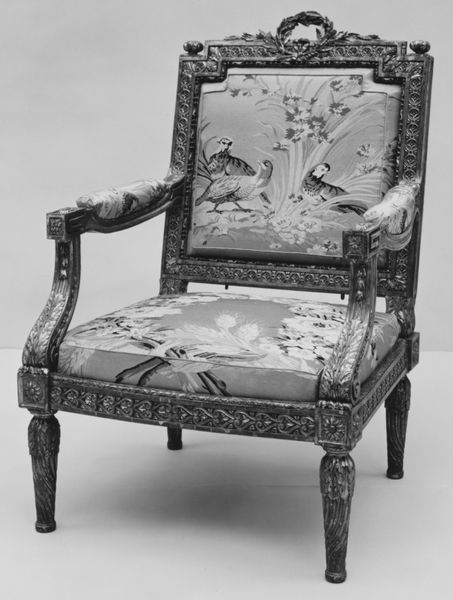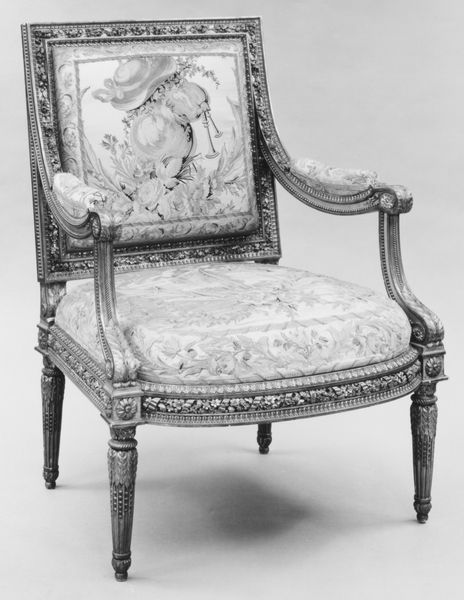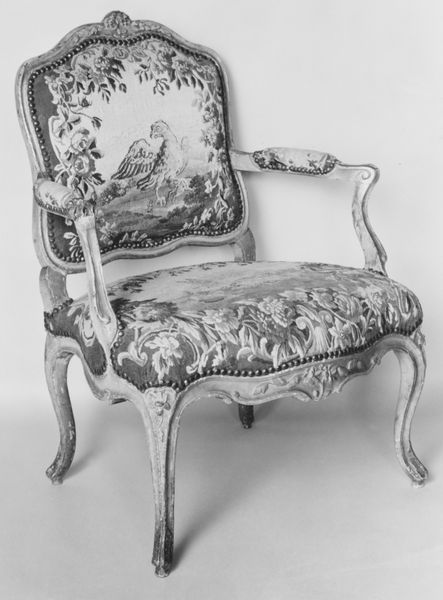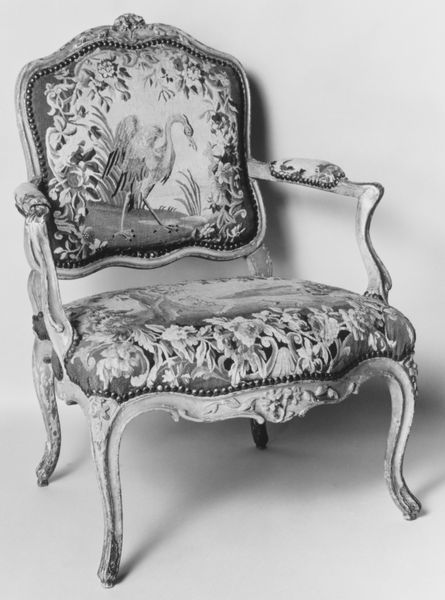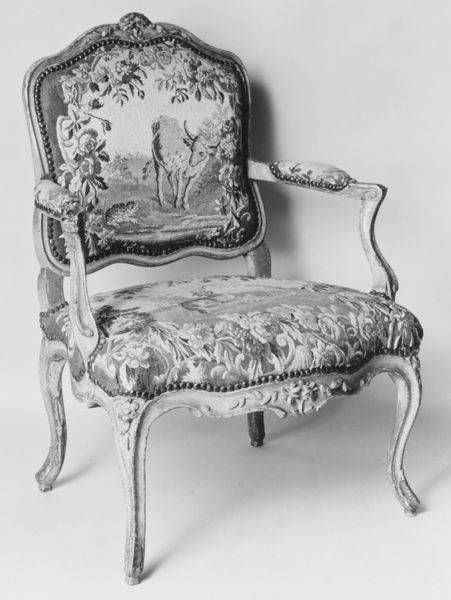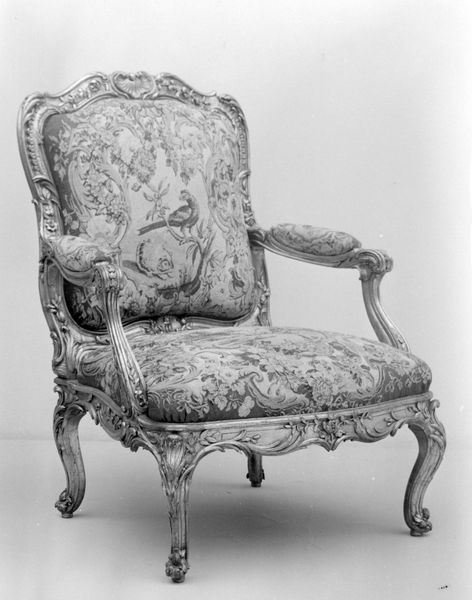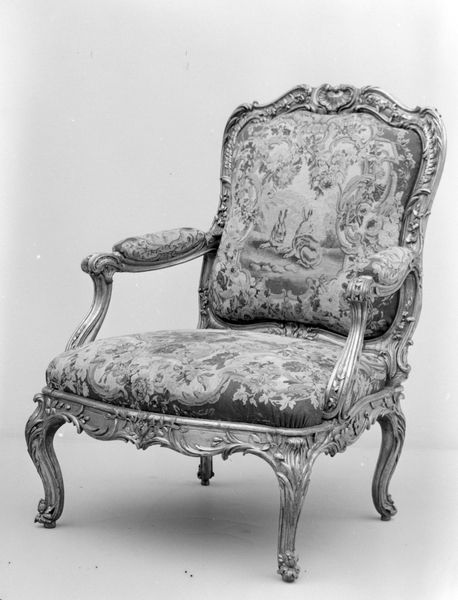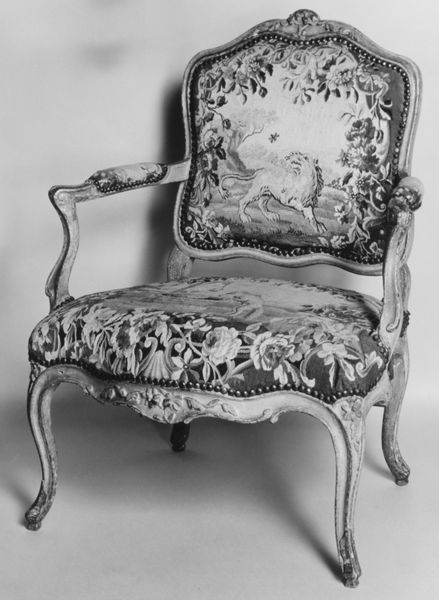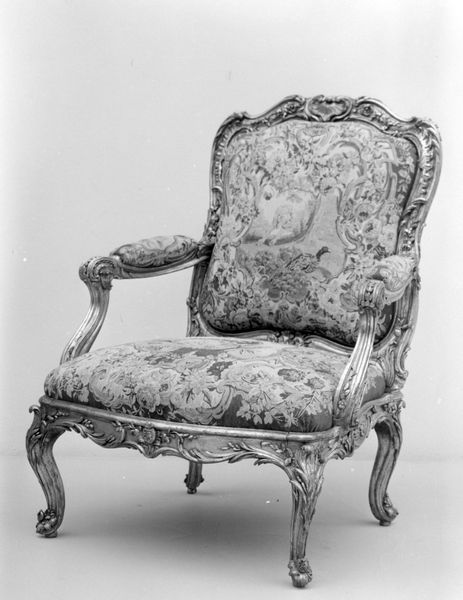
Dimensions: Overall: 37 5/8 × 28 × 29 in. (95.6 × 71.1 × 73.7 cm)
Copyright: Public Domain
Curator: Ah, this chair. Immediately I get a sense of faded glory, of whispers from another century... almost feels haunted, in a plush, floral sort of way. Editor: Exactly! What you're sensing is likely intentional. This is an armchair, believed to be part of a set crafted between 1780 and 1790 by Georges Jacob. It's an exquisite example of late 18th-century decorative art and a fantastic find at the Metropolitan Museum. Curator: Jacob, you say? I knew I felt a playful, almost impish energy. The floral tapestry, though…it almost feels…melancholy against that gilded wood. Tell me, what story is this chair trying to tell? Editor: Well, let's look at the symbols woven into its fabric. We see a vase overflowing with flowers, topped rather jauntily with a hat. A symbol of abundance and beauty of course but alongside this, are two musical instruments... A calling out, perhaps? Invitations to social events were considered symbols of status, pleasure, and courtly rituals. This was an age obsessed with etiquette. Curator: The vase feels weighty though doesn't it? Like something ornate, maybe even unwieldy that we nonetheless adorn ourselves with to impress and signal, yet its hollow. Does that trumpet really sing, or is it there just to look beautiful? It makes me wonder what truly resonated with those who once sat here? Editor: It's a sharp observation! It represents a cultural memory where appearances were paramount. Think of the French court during that period. This chair wasn't just functional; it was a statement, projecting status and taste. The flowers too are particularly telling. The detail! The arrangement... they signal a specific knowledge and involvement with trends. But also the knowledge and control of nature which the well arranged flowers shows. Curator: Control... yes, but is all that finery also a beautiful cage? It's gorgeous but that controlled ornamentation looks rather suffocating if I must be honest. Editor: That friction between beauty and restriction, between ornamentation and genuine feeling, is part of its power, I think. Its elegance and craftsmanship represent so much about the time it was crafted... while that small amount of melancholic impression reflects also, for me, a loss of genuine personal feeling or perhaps just the control of how it appears outwardly in such finery. Curator: I agree!
Comments
No comments
Be the first to comment and join the conversation on the ultimate creative platform.
